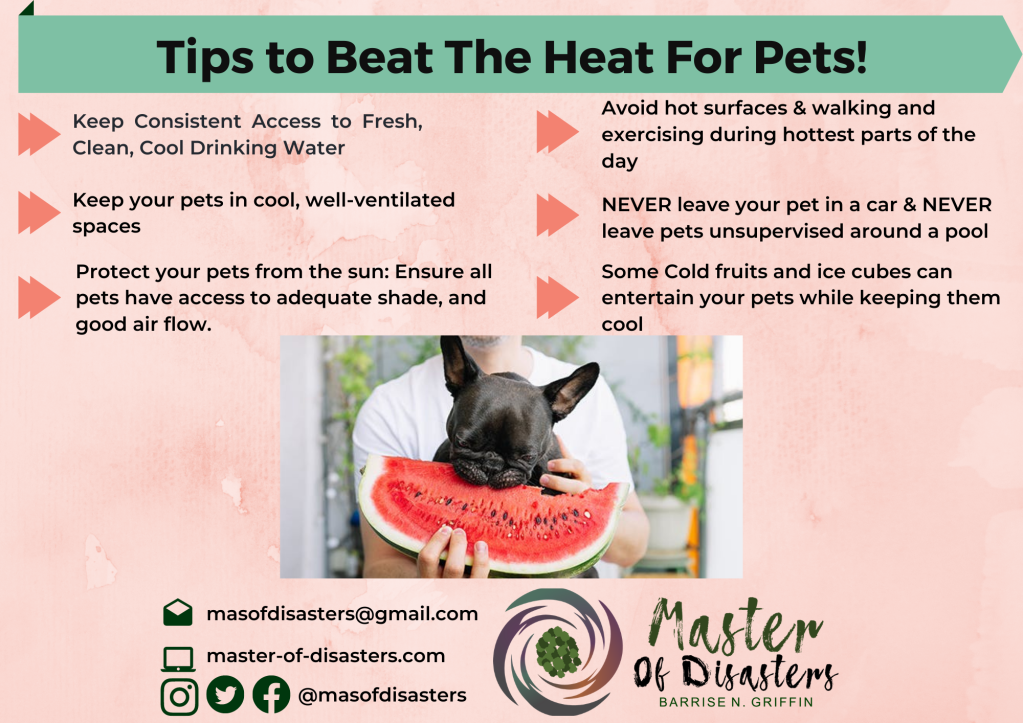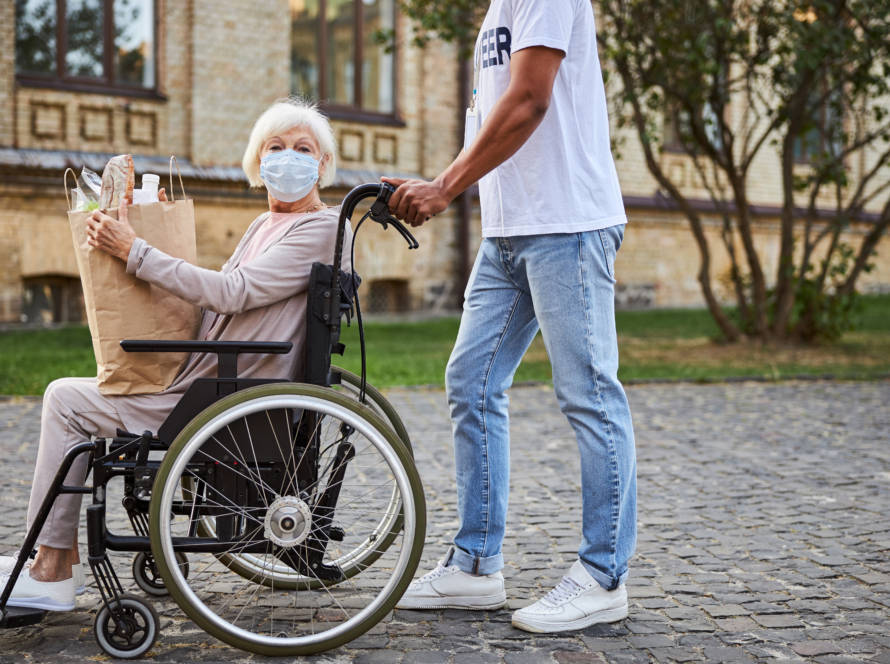Spending time with our pets outdoors is a great way to boost your mood and keep your fur baby happy. But warmer weather can take a toll on your pets just as much as you. Pets can face stressors and illnesses related to hot weather conditions such as heat stroke and dehydration, and these issues become more common as temperatures rise. So, it is important to pay attention to the signs and be prepared to use your judgement to determine your pet’s safety outdoors.
Heat Stress and Heat Strokes are life-threatening to your pets and their condition can become fatal rapidly. It can even cause damage to your pet’s internal organs, thus requiring immediate and urgent treatment. Things that can contribute to heat stress in Pets:
| Inadequate shade | A warm/hot environment with inadequate ventilation |
| Excessive exercise | Insufficient drinking water |
Signs or Symptoms for Heat Related Stresses and Illnesses
| Agitation or Restlessness | Excessive Drooling or Salivating | Heavy, Consistent Panting |
| Bright Red Tongue | Increased Heart Rate | Breathing distress |
| Vomiting or Diarrhea | Signs of Mental Confusion | Dizziness or Staggering |
| Weakness, Lethargy | Muscle Tremors | Seizures |
| Collapsing and Lying Down | Little to No Urine Production | Coma (Extreme Cases–seek help immediately) |
Remember that not all pets handle heat and stress the same, and animals do not handle heat the same way as humans. Additionally, some pets may be more at risk than others. For example, dogs with flat faces (like Pugs and English Bulldogs), obese dogs, and ones with heavy coats have an even greater risk of overheating.
Tips to Keep Your Pets Cool & Healthy
- Keep Consistent Access to Fresh, Clean, Cool Drinking Water: Pets need access to water consistent, especially during hot weather months. Ensure the water is cool, fresh and available at all times, even when travelling. If you plan to leave your pets alone, ensure the water bowl is full and spill or tip proof.
- Keep your pets in cool, well-ventilated spaces: Many animals do not sweat, and lose heat through panting, which relies on having a good air flow. Keep all unscreened windows or doors in your home closed, and make sure adjustable screens are tightly secured.
- Protect your pets from the sun: Outdoor pets should always have access to sufficient and adequate shade, in addition to having plenty of water, and good air flow.
- Avoid hot surfaces: Paw pads on cats and dogs burn easily, with bird claws also being sensitive to hot surfaces. Avoid going for walks and play or exercise activities during the hottest parts of the day, or on hot surfaces like asphalt, concrete or hot sand. Exercise and Play in the morning or evenings when it is cool.
- Keep your pets well groomed: To keep your pets cool, clip their coats short, but not shaved. Sunburn is dangerous for animals, especially those with light-coloured fur and skin. If possible and available, apply regular sunblock or protective creams to vulnerable areas like their paw pads, nose, and ears. (Not a Paid Ad: But I use Paw-Tection and Nose Balms by the Natural Dog Company on my baby girl Bleu and she seems to enjoy the pamper session)
- NEVER leave your pet in a car: Temperatures can rise rapidly and even mild temperatures can kill pets quickly. Don’t take that chance, even for a minute.
- NEVER leave pets unsupervised around a pool: Not all animals are good swimmers. Always supervise them around large bodies of water and have appropriate floating devices for them to use. Make sure to rinse them off after to remove salt or chlorine from their fur.
Other Ways to Make Keeping Cool Easy and Interesting for your Pets
- Ice: Freeze small cubes of ice for your dog to lick. You can even freeze a treat inside the cubes to keep their interest longer. Be careful as ice can freeze-burn their tongues. Even cats like to lick and chase ice cubes around.
- Use kiddie pools to let your dog splash around. Toss some treats and ice in the water so they can “hunt” for them. Even using some fresh fruits like crisp apples can also make for a healthy snack.
- Home-made Popsicles: Make your pets some frozen treats to enjoy, even using fresh fruit purées like mangos and watermelon. You can find some animal friendly recipes online.
- For cats: Daily brushing, and using a damp towel to cool off their skin and pads can help cool them down. Keep their water bowl cool by adding some ice. Allow them to use cool spots in the house like bathroom tiles.
If you suspect your pet is showing signs of heat stress, heat exhaustion or a heat stroke. Initial home emergency treatment should focus on regulating your pet’s body temperature
- Remove your pet from the hot environment immediately.
- Apply or Spray cool (not freezing cold) water on the animals fur and skin. Do not drown or bathe them in water. Then apply a fan to maximise heat loss.
- If your pet can drink, give them small sips of cool water.
- Wetting down the ground around your pet may also help.
- Do NOT use freezing cold water or ice.
If your dog is still breathing but the situation isn’t improving, take them to the Vet immediately.
Even if your pet seems to be recovering, take them to a Vet because heat can cause internal organ damage.
Include your pet in your Family or Household Emergency Plans. Here are tips on creating a Pet Disaster Kit.




